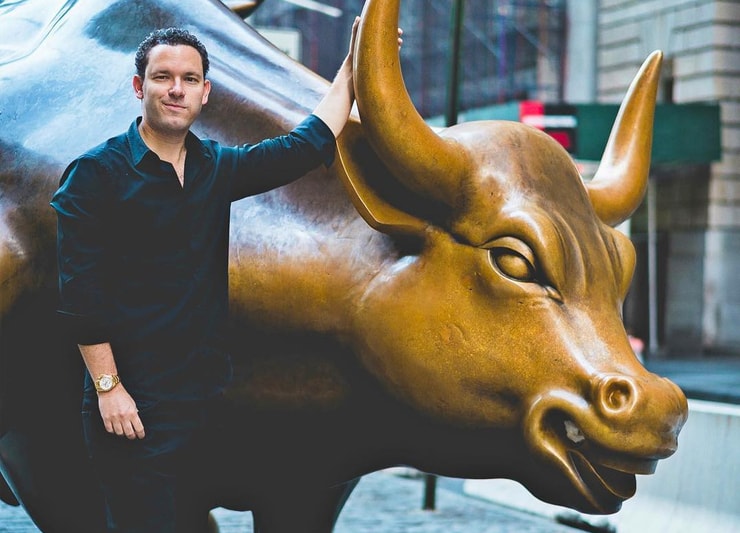What do I think of E-Trade for day trading — especially after its recent big announcement regarding OTCs?
Yes, it’s one of the brokers I use. And I’ll get into that OTC news in a sec…
Students often ask me which brokerage I use for day trading.
I use a few different brokerage accounts, and each has its upsides and downsides.
Brokers are like trading styles — there’s no right or wrong choice. What matters is what works best for you.
I get a lot of questions specifically about day trading on E-Trade. I’m getting even more because of a new SEC regulation. In mid-May, E-Trade announced upcoming rule changes for trading over-the-counter (OTC) stocks. I’ll dig into more on that later…
So again, yes, I have an E-Trade account. I’ve used it for 20+ years. Since I’m familiar with the software, I’ll share a few pros and cons about E-Trade day trading.
Table of Contents
- 1 Does E-Trade Allow Day Trading?
- 2 E-Trade Day Trading Platform: Pros and Cons
- 3 E-Trade and the SEC’s New OTC Restrictions
- 4 Power E-Trade
- 5 E-Trade Pro
- 6 E-Trade Mobile App
- 7 Is E-Trade the Best Platform for Day Trading?
- 8 Frequently Asked Questions About E-Trade Day Trading
- 9 The Bottom Line on E-Trade Day Trading
Does E-Trade Allow Day Trading?
Like most major brokerages, E-Trade allows day trading.
However, to set yourself up for success, you must know specific day trading rules and requirements, like the pattern day trader (PDT) rule…
E-Trade Day Trading: Rules & Restrictions
What’s a pattern day trader?
Per FINRA, it’s anyone who executes four or more day trades within a rolling five business-day period.
I’m guilty as charged and so are many of my Trading Challenge students. No, it’s not a stain on your character. I’ve been a proud PDT since 1999.
This just means that if you open and close more than four day trades in five business days, your account will immediately be flagged as a PDT. Then what?
FINRA laws say that the minimum cash required for pattern day traders is $25,000. So maintain an account balance of at least $25,000 or risk a 90-day restriction on your trades.
No one wants that restriction, but it happens to many newbie traders.
The PDT rule may seem scary or annoying, but it’s pretty simple to track once you start day trading.
In fact, I think the PDT rule is a good thing.
90% or more of traders lose money … The PDT rule can help save irresponsible newbies from themselves. Limits on trades force beginners to focus on their best setups.
It can also hammer in the importance of cutting your losses quickly. You’ll know you have a limited number of trades to make up for any losses. Cutting losses quickly is my #1 rule. And it’s just one of many rules to help traders stay safe. Learn all my rules and strategies in my Trading Challenge — apply today.
Fees & Commissions
E-Trade advertises commission-free trading like many other brokerages.
If you trade U.S.-listed stocks or ETFs, you can trade with no extra fees.
But for the ‘exotic’ penny stocks I trade, there’s often a $4.95–$6.95 fee per trade. That’s because these are tiny companies that trade over the counter on a broker-dealer network — not a major exchange.
Option trades also carry fees on E-Trade. So if you’re looking to snag some out-of-the-money GameStop calls, E-Trade will charge 65 cents per contract.
All these exceptions are listed on their website, but students still ask me why they’re paying fees to a commission-free brokerage. Do your homework. Don’t understand E-trade’s fees? Look it up. My job is to teach you, not provide brokerage customer service.
E-Trade Day Trading Platform: Pros and Cons

Like any service, E-Trade has things I like and some I don’t like. Let’s get into the pros and cons…
More Breaking News
- AppLovin Stock Soars: Is This the Golden Era for Mobile Ad Innovators?
- From Underdog to Top Performer: How Endeavour Silver Outpaced Expectations
- Marathon Digital Holdings: Is the Recent Crypto Dip a Buying Opportunity?
E-Trade Day Trading Pros
E-Trade Day Trading Pros #1: Emphasis on Education
My students know I’m huge on education. You must know stock market basics.
So I like that E-Trade prominently showcases the “Knowledge” tab on its homepage. It’s where you can find information about risk tolerance, tax planning, and portfolio management.
E-Trade Day Trading Pros #2: Thematic Investing
The “Thematic Investing” tab has a bunch of different stock themes. That can be helpful to traders…
For the past year, stocks have boosted and rotated largely on popular themes. Work-from-home, electric vehicles, or reopening plays … You have to know which sector’s hot and the stocks in it. This is just one more feature to potentially help you.
E-Trade Day Trading Pros #3: Day Trader Status
E-Trade grants day trader status, which can mean four-times leverage for some day traders.
So, if you deposit $10,000 cash, you could day trade $40,000 worth of stock. You can’t do this in an E-Trade cash account — you need a margin account…
I don’t recommend trading on margin or leverage. Especially for newbies. Yes, there’s the potential for bigger gains. Remember you can easily lose as much. Imagine not just blowing up — but taking on massive debt — on one bad trade. Yep, it can happen that fast. Read more about margin here.
E-Trade Day Trading Cons
E-Trade Day Trading Cons #1: No Wire Transfers
It takes almost a week to clear automated clearing house (ACH) funds in cash accounts, and E-Trade doesn’t accept wire transfers.
No wire transfers mean you have to do an ACH transfer. That means a minimum of three business days after opening the account before you can trade.
Yes, it’s a drag. But you should know that going in. Always do your research before picking a broker, including all the finer details like transferring money in and out.
E-Trade Day Trading Cons #2: ECN Fee
This can make E-Trade after-hours trading less attractive for traders. Frankly, I’m OK with that. After-hours trading is illiquid and risky.
Here’s the deal: E-Trade has an “ECN Fee” of $0.005 for any after-hours trade.
Again, I rarely trade in extended hours. But if you feel you must, be aware of E-Trade’s fees. Do your homework. No excuses!
E-Trade and the SEC’s New OTC Restrictions

E-Trade recently emailed users about new SEC restrictions. In short, they’ll remove certain OTC stocks from their platform later this year to meet the SEC’s new guidelines on OTC “Pink No Information” companies.
I know some traders and students are freaking out about this, but let’s break this down. The SEC is targeting some of the sketchiest pink sheets companies. They’re WAY behind on disclosures and filings.
Will it mean fewer penny stocks to trade? Maybe. But I’m not worried about it.
Yes, I trade a lot of OTCs (they’re some of the best day trading stocks). I’ve made millions trading these stocks.*
But I’m fine with the new regulations. It’s good to clean out the gutter! In this crazy market, a lot of OTC companies are complete frauds. No wonder the SEC is trying to do some cleanup.
So I’m not concerned in the least. And I advise you to take the same perspective. There are always opportunities. New traders may see these rules and think they missed the party or that it’s too late to learn how to trade now…
No! This is exactly the mindset I want my students to avoid. Self-sufficient traders learn to adapt to any market conditions.
In my 20+ years of day trading, I’ve seen dozens of different rules and restrictions come and go. I’ve adapted to all of them, and here I am, still successfully day trading.*
So I’m living proof that you can adapt to the rules. Take it one trade at a time, one day at a time. Know your history, do your research, and stay disciplined!
Power E-Trade
This is the E-Trade app’s in-browser option, kind of like thinkorswim on TD Ameritrade.
This charting software has decent depth and capabilities, and these apps put TD Ameritrade and E-Trade on a level above other brokerages.
But my top charting and scanning platform is StocksToTrade.** Yes I helped design it, and yes I’m still an investor in it. That’s why it’s great for the penny stocks I love to trade. And STT now has a mobile app!
E-Trade Pro
While Power E-Trade is free, you have to use it in a web browser. To use the desktop app, E-Trade Pro, you have to do a few things…
First, you need at least $1,000 in your account. Second, you need to subscribe to real-time quotes, which is no cost for non-professional traders.
E-Trade Mobile App
The E-Trade mobile app is pretty standard. It offers a lot of the features you’d expect from other brokerages — real-time charts, market insights, and news feeds.
For options, you can input multi-leg spreads from your phone.
Again, my go-to day trading platform is StocksToTrade.** And now that the STT mobile app is up and running, I can keep tabs on the market while I’m on the go.
Is E-Trade the Best Platform for Day Trading?
I can’t answer that question because it depends on your needs.
Every trader has different needs. So take the time to get familiar with several major brokers. Then pick one or two that best suit you.
Frequently Asked Questions About E-Trade Day Trading
Which Broker Is Best for Day Trading?
The best day trading platform is the one that’s best for you. It’s a personal choice that depends on your account size, trading style, setup, and more.
Does E-Trade Offer Free Trading?
If you trade U.S.-listed stocks or ETFs, then yes. But if you trade options, OTCs, or foreign-listed companies, those trades carry standard fees. Do your research.
How Many Trades Can You Make Per Day on E-Trade?
You can make as many trades as you want on E-Trade, depending on your account size and PDT status.
The Bottom Line on E-Trade Day Trading

©
So, what do I think of E-Trade for day trading? Well, it’s one of the brokers I use. But there is no perfect broker. I use the brokers that suck the least for me.
You need to pick what works for you. Your broker is just one part of the picture. Focus on your education, learning the patterns, and honing your strategies.
I’ve been working at it for 20+ years and have made over $7.1 million trading penny stocks.* Now I teach everything I’ve learned. Ready to start your market education?
Start with my free penny stock guide.
Or check out my “Pennystocking Framework” DVD. Most of my trades still follow the 7-step framework I lay out in the DVD. Top traders like Jack Kellogg learned to use my framework in the Challenge — and still use it.
Want a really killer deal? The “Pennystocking Framework” DVD is a bonus when you enroll in my 30-Day Bootcamp. It’s a low-cost way to build your trading knowledge foundation in 30 days — or less if you’re an overachiever.
So what do you think about E-Trade and day trading? Let me know in the comments — I love getting feedback from you!
Disclaimer
*While Tim Sykes has enjoyed remarkable success trading stocks over the years, earning an aggregate sum of over $7 million in trading profits between 1999 and 2021, his primary income derives from the sale of financial education products and subscription services offered by various businesses and websites in which he has an ownership stake.
This level of successful trading is not typical and does not reflect the experience of the majority of individuals using the services and products offered on this website. From January 1, 2020, to December 31, 2020, typical users of the products and services offered by this website reported earning, on average, an estimated $49.91 in profit. This figure is taken from tracking user accounts on Profit.ly, a trading community platform.
**Tim Sykes has a minority ownership stake in StocksToTrade.com.







Leave a reply